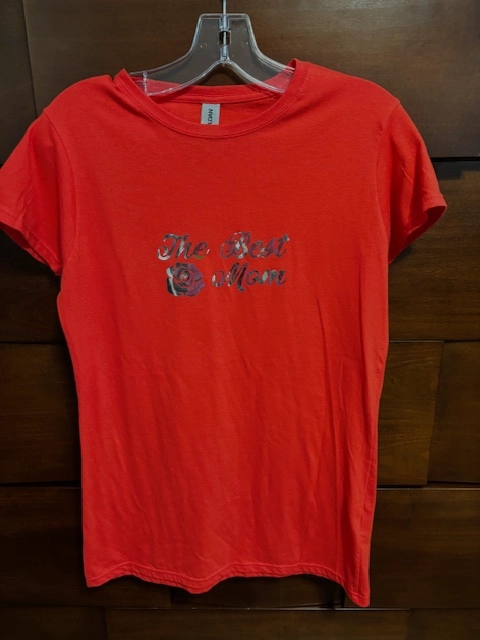Fashionable Backpack Embroidery for Personalized and Special Styles
Fashionable Backpack Embroidery for Personalized and Special Styles
Blog Article
The Art of Custom-made Embroidery: Opening the Secrets to Creating One-of-a-kind and Unforgettable Layouts
The keys to creating customized needlework designs that astound the eye and leave a lasting perception lie in a fragile equilibrium of strategy, creative thinking, and interest to detail. As we delve into the world of custom-made needlework, we reveal the nuanced interaction between string selection, sew intricacy, and style customization that raises a plain garment to a work of art.
Selecting the Right Needlework Threads
When selecting embroidery threads, what essential variables should you take into consideration to ensure the ideal results for your personalized styles? The selection of needlework string is important in establishing the final result of your embroidered design. Among the primary factors to consider is the material of the thread. Various products such as cotton, polyester, rayon, and silk supply varying degrees of sheen, longevity, and texture. It is necessary to pick a thread material that complements the material you are stitching on and lines up with the desired look of the style.
In addition, the weight or thickness of the string plays a substantial function in the look of the embroidery. Thicker threads can include dimension and appearance to your style, while finer strings are suitable for complex details and small message. Additionally, thinking about the shade fastness and washability of the thread is important to make certain that your custom-made styles maintain their high quality and vibrancy with time. By meticulously evaluating these factors and choosing high-quality threads that satisfy your particular requirements, you can improve the aesthetic appeal and long life of your embroidered productions.
Exploring Different Stitch Methods
To explore the world of 'Exploring Different Stitch Methods', one should grasp the intricacies and subtleties that each sewing approach brings to the art of needlework. Different stitch techniques not only add visual interest yet likewise add to the general appearance and dimension of the style. One preferred stitch technique is the satin stitch, which includes closely packed parallel stitches to produce a smooth and glossy surface area, suitable for filling in forms and creating strong outlines.
On the other hand, the backstitch is a versatile strategy frequently utilized for describing and including fine information. It includes stitching backward to create a strong line of embroidery. Additionally, the French knot stitch adds a responsive aspect to designs, best for creating distinctive accents like blossom facilities or decorative touches.
Checking out various stitch strategies permits embroiderers to have fun with light, shadow, and depth within their styles, elevating the aesthetic charm and creative high quality of helpful site their needlework tasks. By grasping numerous sewing techniques, one can open endless possibilities for developing unique and memorable customized embroidery items.
Incorporating Personalized Layout Components
Having actually discovered the intricacies of different stitch techniques such as the satin stitch, backstitch, and French knot, the emphasis now shifts in the direction of incorporating individualized style elements in customized embroidery jobs. Customized style components play a critical duty in making embroidery tasks absolutely distinct and memorable. One means to integrate personalization is by adding initials, names, or substantial dates to the design. This not just includes an individualized touch but also enhances the nostalgic value of the needlework piece.
Another means to include personalized design aspects is by including symbols or motifs that hold unique significance to the recipient or show their interests and personality. Including a favored flower, animal, or hobby-related symbol can make the needlework design more significant and individualized. Furthermore, selecting shades that reverberate with the recipient or align with the designated motif can further boost the personalization of the embroidery job.
Understanding the Art of Color Control

One trick aspect This Site of color sychronisation is understanding color theory. This consists of recognizing just how different colors communicate with each other, the emotions they communicate, and exactly how they can be incorporated to produce aesthetically enticing layouts. By applying color theory concepts, embroiderers can create unified shade schemes that boost the general look of the design.
In addition, taking notice of contrast is important in shade sychronisation. Making use of contrasting shades can aid specific aspects of the layout pop, boost clarity, and produce an aesthetically vibrant embroidery item. By mastering the art of shade sychronisation, embroiderers can elevate their layouts and create remarkable pieces that reverberate with clients and viewers alike.
Enhancing Texture With Advanced Needlework Stitches
Bullion knots, on the various other hand, can be utilized to create twisted, ropelike components that add a glamorous feeling to the additional reading needlework. Exploring with these sophisticated needlework stitches allows you to push the borders of typical embroidery and create really unique and aesthetically enticing structures in your styles.
Final Thought
In conclusion, the art of custom embroidery includes a mix of picking the ideal strings, discovering different stitch methods, integrating tailored style components, grasping color coordination, and boosting structure with innovative stitches. By comprehending and executing these crucial elements, embroiderers can produce special and unforgettable designs that display their creativity and ability. Embroidery lovers can open the keys to developing gorgeous and bespoke pieces that stand apart and leave an enduring impression.
Report this page